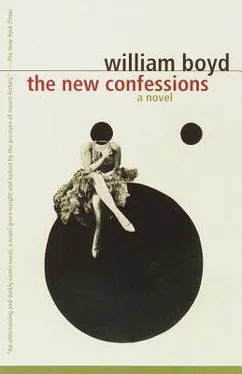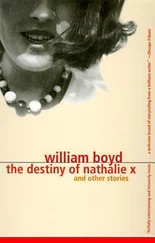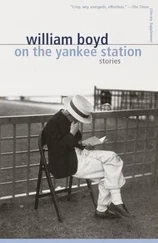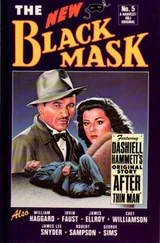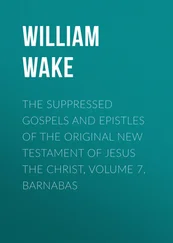On July 1, 1778, it was a warm day. Rousseau went for a long walk with the marquis’s son in the meadows of the park at Ermenonville. That night he dined extremely well in the company of the marquis and his family. He seemed amiable and vivacious. The next day, however, he felt ill. Thérèse assumed he had eaten too much. At ten o’clock, staring out of the windows at the gardens, he had a severe apoplectic fit. He fell to the ground, breathless and in agony, striking his head against the floor, causing a bad wound. He died almost immediately.
The Last Walk of Jean Jacques Rousseau opens with a shot of the dining room in the pavilion. Jean Jacques (Karl-Heinz) sits at the table eating his breakfast. The young Girardin comes to collect him and they set off on their walk. The pavilion, we then observe, is set in a meadow on the Monterey Peninsula near Big Sur. The sense of reality that the opening scene seemed to present so faithfully begins to fall away, never to be recovered.
When Jean Jacques had collected and examined a plant he used to tie a red or gold ribbon round one of the same type so he would know it was documented. On leaving the pavilion, he and Girardin find themselves in a prairie alive with red and gold ribbons. They enter a copse of trees and descend into a little wooded canyon through which runs a fast shallow river (the Little Sur River, in fact). Two girls are sitting beside it, one combing the other’s hair. In the background their horses graze. Jean Jacques watches them mount up and ford the river. We cut to the prelude to the cherry-orchard sequence idyll in The Confessions: Part 1 . Color gives way to black and white. We see a young Jean Jacques help the girls across a similar river. Then we intercut the orchard sequence with the curious faces of old Jean Jacques and the baffled Girardin. Later, they botanize, Jean Jacques diligently tying red and gold ribbons on plants as they go. They come upon a hermitage. The monks offer them lunch. A lesson is read during the meal about how futile it is for man to complain about his lot. “God has brought man nothing, He oweth him nothing.”
After lunch they go into the garden of the hermitage. A group of contemporary Californians sit before a screen watching scenes from The Confessions: Part I . Old Jean Jacques observes his young self arriving in Annecy on his way to the house of Mme. de Warens.
Jean Jacques and Girardin leave for home. On their way back they cross the Pacific Coast Highway (completely unperturbed by the automobiles). They stop at a roadside diner, which is full of garish tourists. The owner recognizes Jean Jacques, sets up a table for him outside underneath a redwood and provides him with bread, wine and cheese.
GIRARDIN: He seems to know you well.
JEAN JACQUES: In fine weather my wife and I used to come here and eat a cutlet of an evening.
As they approach the pavilion they notice a huge Great Dane loping and bounding about the meadows. The dog sees Jean Jacques and races towards him. It leaps up and knocks him heavily to the ground. Unconscious, Jean Jacques has a vision of Mme. de Warens, her back towards him, about to enter the door of the church at Annecy. Then he sees a view of the lake at Annecy, which merges with the Pacific Ocean off Big Sur. He hears the monk’s voice saying: “All flesh is grass.… The grass withereth, the flower fadeth.…” We see the meadow with its fluttering ribbons through which they passed that morning dissolve into a smoking ashfield (a National Guardsman with a flamethrower was responsible for the transformation, supervised by the Carmel Fire Department).
Jean Jacques recovers himself and they make their way back home. We cut to the dinner scene, with the marquis, the marquise and their family present. Candles flicker; their gleam is reflected in the silverware. Jean Jacques talks with almost manic animation. Later, when everyone has gone, and Thérèse is upstairs in bed, he stands alone in the dark room looking out through the windows at the moonlit garden. For an instant we see the Great Dane lope across the lawns. Then the windows become white screens and upon them is projected the vision he saw earlier: Mme. de Warens about to enter the church.
“Julie,” he whispers.
She turns. And there is Doon.
Suddenly the image is shattered by a stone. Then dozens of stones are hurled through the panes. Glass breaks. Shards fly. We are back in Môtiers; the mob is stoning his house. A rock catches Jean Jacques on his forehead; blood flows. He clutches his chest in monstrous agony and falls to the floor.
Thérèse comes in. The room is exactly as it was. Exquisite moonlight floods the tranquil garden. Jean Jacques lies on the floor, dead. End. Credits.
My sources for the film were the Rêveries , a description of a walk taken with Rousseau, written by Bernardin de Saint-Pierre, my own memories (which no doubt you will have spotted) and inspired pilfering of my subconscious. I assembled my sources and the narrative seemed to flow from my pen with an ease I had never before encountered. The one critic of any repute who noticed the film wrote, “ The Last Walk exerts a beguiling grip on the viewer but remains in the end a maze of inpenetrable symbols.” Ah, but remember there is always a way out of a maze.
We shot the film in the late summer of 1958. For the three years previously, Academy Awards for the best screenplay had gone to blacklisted screenwriters using pseudonyms. Eddie was sure that 1959 would see the MPAA rescind its bylaws against those who had refused to cooperate with HUAC. The time was right, he said, but he still wanted my director’s credit to be pseudonymous. I chose the name John Witzenreid.
I enjoyed making that small film as much as I relished the scale of The Confessions: Part I . Our cast was composed of amateurs and bit-part players. We had a small crew, based ourselves in San Francisco and traveled out to whatever location took our fancy.
For a fortnight Karl-Heinz and I rented the small shack that we had used on our previous holidays. It had been refurbished somewhat; it had a shower now and the kitchen had been modernized. Karl-Heinz wasn’t well, after filming he was due to go into the hospital for another operation on his ulcer, but our time in that cottage seemed briefly to revive him. We reminisced a lot about the past, the forty years we had known each other. The fogs would come in from the sea in the evening, shrouding the spectacular sunsets like a Todd Soft-Focus Lens.
It was here I perfected the dry martini — John James Todd style. One: chill everything to just above freezing point — gin, Noilly Prat, lemon, glass and shaker. Two: fill a saucer with Noilly Prat and upend the cocktail glass in it. About half an inch of the rim should be submerged. Three: fill the shaker with ice and then add the gin. Do not shake, rotate gently a couple of times. Four: take the glass from the saucer. Five: fill with gin. Six: cut a piece of lemon peel and allow a few spots of zest to spray onto the surface of the gin. Seven: drink. This method is infallible. It is the only way (a) to guarantee the minutest addition of Noilly Prat to the gin, and (b) to taste it. Otherwise you might as well drink neat gin. The vermouth is a crucial ingredient. Those people who say “Show the gin the Noilly Prat” don’t know what they are talking about. It is a cocktail , not a draft of neat alcohol.
So I drank these dry martinis and Karl-Heinz swigged some white chalky liquid to line his stomach and we watched the earth tilt into darkness. Although I had to ignore it there was a valedictory note in these evenings. Karl-Heinz began, idly, ironically, to speculate about his death. For my part I was aware that my Confessions film was about to be as complete as it ever would be. Without Karl-Heinz there would be no point in persevering further.
Читать дальше
